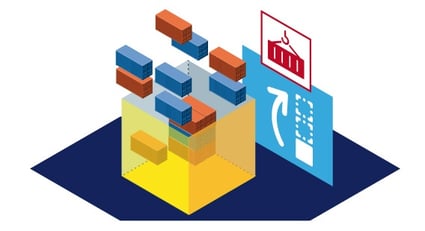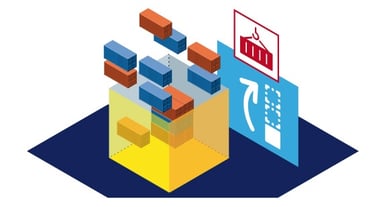A Real-time Planning FAQ
Brian Hoey - May 31, 2018

 Imagine you’re a trader on the floor of the New York Stock Exchange. Every morning, you check the prices of the stocks that you’re interested in, and you act on those numbers, not checking them again until the end of the day. Your competition, on the other hand, is using real-time information to inform their trading decisions. Which technique seems more likely to yield a profitable trading strategy? Your knee-jerk reaction is probably that you’re going to lose money virtually every day, because your competition has a more accurate picture of the real financial landscape while you’re using information that’s obsolete virtually as soon as you set foot on the trading floor.
Imagine you’re a trader on the floor of the New York Stock Exchange. Every morning, you check the prices of the stocks that you’re interested in, and you act on those numbers, not checking them again until the end of the day. Your competition, on the other hand, is using real-time information to inform their trading decisions. Which technique seems more likely to yield a profitable trading strategy? Your knee-jerk reaction is probably that you’re going to lose money virtually every day, because your competition has a more accurate picture of the real financial landscape while you’re using information that’s obsolete virtually as soon as you set foot on the trading floor.
While in this context it’s easy to identify outdated information as a major competitive disadvantage, many businesses across a variety of fields fail to apply the same thinking to their own operations. As a result, while most individuals would balk at the idea of trading stocks without up-to-the-minute updates on pricing and market trends, relatively few manufacturing businesses have successfully incorporated real-time information into their production processes. One reason for this may be a general sense of mystification surrounding the new technologies that make instantaneous data visibility possible. In that spirit, here are some frequently asked questions (and answers) about real-time planning.
What Does Real-time Planning Mean?
On a very basic level, real-time planning simply the integration of instantaneous, up-to-the-minute demand, supply, and transport information into supply chain workflows. As a key component of Industry 4.0, real-time information is made possible by the increases in visibility and transparency that arise in a smarter, more connected value chain. As Industry 4.0 systems become increasingly interoperable, businesses should see increases in flexibility and agility, meaning that when breakdowns or bottlenecks occur supply chain planners are able to adapt their existing plans in order to preserve maximum value. Real-time planning, then, is a way to capitalize on that new agility, giving planners the most current information with which to adapt their plans.
How Will It Impact My Planning and Execution?
In addition to making supply chains more responsive, real-time data can also add a new level of granularity to the operational planning process. Specifically, it fuels sales & operations execution (S&OE), a counterpart to sales & operations planning (S&OP) that has emerged in recent years. Where S&OP is focused on mid-term, monthly or quarterly planning, S&OE finally gives businesses the opportunity to keep those mid-term plans on track by monitoring daily and weekly demand fluctuations. With the use of up-to-the-minute data about fuel and shipping prices, inventory levels, and customer requirements, S&OE planners can make minute adjustments to transit routing and inventory usage in order to keep the entire value stream optimized for the goals set forth in the S&OP phase. Like real-time itself, this is a process that was virtually impossible before the advent of Industry 4.0, but now stands to make the administration of the entire supply chain that much more efficient.
Can Real-time Decrease Supply Chain Disruptions?
As alluded to above, real-time planning can be a useful tool for responding to disruptions, offering users the ability to make informed decisions about plan b’s and alternative routing or production plans. But does that mean that it’s powerless to stop disruptions before they happen? On the contrary, real-time information can be a powerful driver of advanced analytics adoption, meaning that companies that employ real-time can leverage their increase in data quality and visibility into a meaningful improvement in predictive and prescriptive insights. Modern analytics workflows can help businesses to create smarter and more accurate forecasts and to uncover potential improvements to existing processes, both of which can substantially decrease disruptions and bottlenecks.
How Will Real-time Impact My Customers?
Naturally, one of the most important considerations when adopting any new technology is its potential impact on your customers. Luckily, real-time can present some distinct advantages outside of your own operational workflows. First of all, any technology that leads to a decrease in disruptions will increase the rate of on-time deliveries to your customers, thereby increasing their satisfaction and bolstering a strong relationship. Additionally, real-time visibility can be extended to customers via a digital interface, giving them the ability to track shipments as they occur, which for many is a meaningful value-added proposition.
How Do I Integrate Real-time Into My Workflows?
We’ve already discussed the extent to which real-time information is made possible by Industry 4.0 advances, but the ramifications of this connection are especially important when it comes to integration. As with Industry 4.0 technologies, real-time requires a high degree of connectivity across the entire value stream and a commitment to making data as visible as possible intra-operationally. This means that the first, and in many ways most significant, hurdle for a supply chain manager in this scenario is to break down information silos and remove unsanctioned Shadow IT. It may be helpful to adopt a Postmodern ERP mindset, creating an IT infrastructure that is at once de-centralized and connected, but whatever approach you take must create a more holistic value chain—one that boosts connectivity and transparency in equal measure.
LATEST POSTS
- Understand Why Production Planning Needs Specialized Solutions
- Understand Circular Economy in The Manufacturing Industry
- How Can Industry 4.0 IT Integration Be Achieved Smoothly?
- The Significance of Order Sequencing in Discrete Manufacturing
- How to improve your Supply Chain Management: The Power of Control Towers



